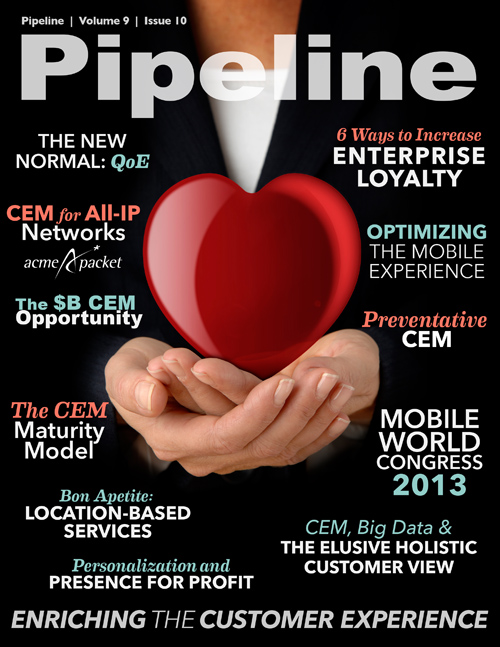The Amdocs Improvement Movement: CEM Maturity Model
By: Ran Achituv

Pretty much everyone in the communications industry understands that customer experience (CX) is becoming the key competitive differentiator. The best way to actually manage and improve CX, however, is less obvious. Some service providers chase the latest technology with bells and whistles, while others focus on improving one or two aspects that they consider to be most important.
Neither approach will work, of course. Managing the customer experience requires something more holistic, since there is no single customer experience management (CEM) solution or technology capable of optimizing CX by itself; a quick fix of a single area or domain is also doomed to failure. A successful approach is based on applying best practices to processes and activities across all domains while tapping into an ecosystem of products and services.
But when there are so many different elements that have an impact on CX, how does a service provider know where to start? This question has been posed to Amdocs personnel over and over during some of our recent meetings. Service providers are also unsure of where to invest and how to create a comprehensive CEM strategy that will serve them well both now and in the future.
CEM: Cooperative emergency marketing?
One of the difficulties in discussing CEM is that each service provider and vendor seems to have its own unique definition of the term. Adopting a common definition is the first step in ensuring that everyone, from peers and partners to prospects and customers, is on the same page.
The definition I favor, which is well articulated in the TM Forum guidebook emphasizes the importance of the holistic approach: CEM is “the methodology of designing, executing, monitoring and optimizing the customer experience across touch points while building brand perception, addressing customer expectations and enhancing long term profitability.”
One size does not fit all
Now that we have a working definition, can we agree on a one-size-fits-all formula for success? Unfortunately, a thorough review of Amdocs’s recent projects and an examination of industry case studies revealed there is no single CEM formula that fits all service providers. In some cases a provider’s CEM program lacks a VOC (voice of the customer) element, or a company might identify conflicting voices among its brand ambassadors as having a major impact on said brand, while others need to focus their efforts on combating employee attrition in order to keep knowledge and expertise within the company. Regardless of the circumstances, each provider should consider its CX pain points and goals, then thoroughly examine its entire CEM life cycle to see how it can be improved and optimized.
Five to thrive
Directives like “Examine the entire CEM life cycle” can seem daunting to service providers, so, to make order out of chaos, Amdocs began extensively researching the life cycle in a methodical way, with a focus on providers’ different challenges and approaches. As part of our methodology we built the CEM Maturity Model, which captured the various challenges faced by each provider. We also translated the products they used into the capabilities they acquired via those products. The model’s foundation was structured as five domains:
- CEM strategy: The depth of a company’s understanding of how the customer experience will help its business, and the establishment of concrete objectives for improving or maintaining CX.
- Leadership and governance: The degree to which the company has established an appropriate CX team, and whether this group has visibility to, and direction from, senior leadership as well as support from influencers across the organization.
- CEM metrics and KPIs (key performance indicators): The extent to which the company has defined CX metrics and uses them as an integral operations component.
- Customer insightfulness: The amount and quality of processes for continually understanding and acting upon the needs of customers as they interact over time and across channels.
- Employee engagement: The degree to which employees, suppliers and partners possess the skills, knowledge and incentives to deliver a superior customer experience.






















